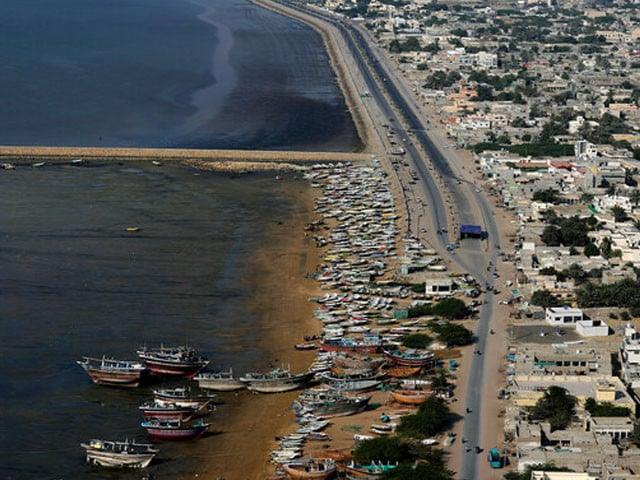Formerly a dynamic hub for fishing and tourism, the coastal city of Gwadar in Pakistan is now struggling with the devastating impacts of climate change. After a decade of extreme weather events, residents and experts warn that the future of the city is in danger.
In February of last year, Gwadar endured nearly 30 consecutive hours of torrential rain, which caused widespread floods, washing roads, bridges and communication lines.
The city, built on sand dunes and bordered by the Oman Sea, is particularly vulnerable to the increase in sea level and extreme weather conditions.
Pazeer Ahmed, a hydrologist based in Gwadar, warns that the low areas of the city could be partially or entirely submerged if the sea level continues to increase. “It is no less than a situation of the island nation,” he said.
The formerly serious proximity of the city with the sea has become an existential threat, with warmer oceans creating larger waves that erude the coast.
Abdul Rahim, deputy director of the Gwadar Development Authority, described the situation as “alarming”, noting that many houses have already been carried away due to the increase in tidal actions and the increase in sea temperatures.
The increase in sea level, aggravated by the melting of the glaciers, caused significant coastal erosion. The Karachi sea level has already increased by almost 8 inches (20 cm) between 1916 and 2016, with projections suggesting another 1.3 cm increase by 2040.
In areas near Gwadar, notably Pishukan and Ganz, the waves submerged mosques, schools and colonies. In some places, the cliffs have been eroded, leaving beaches devoid of structures.
Despite efforts to build dikes to protect the coast, these measures have proven to be inadequate in the face of growing challenges posed by climate change.

The intrusion in salt water has also affected government lands and private property, residents like the former local advisor Qadir Baksh who has trouble maintaining water remotely with daily pumping.
“The rain that came last year has not left,” said Baksh. “The water rises from the ground with such speed that it will reach the four walls of my house if we do not run the generator every day to extract it.”
Rapid urbanization and construction in Gwadar have aggravated floods, disturbed traditional drainage systems.
The city, a key element of a large development project led by Chinese, has experienced significant investments in infrastructure, including a sea port, an international airport and highways. However, despite foreign investments, the city does not have an appropriate sewer and drainage system, which worsens its vulnerability.
Fishing, once a key industry, has also been seriously affected. The captures of narrowing fish, the disappearance of native species and the evolution of migration models have left the community in difficulty.
The rise in sea temperatures and invasive species such as the bustling fish contribute to these challenges, alongside illegal fishing practices and foreign trawlers.

Agriculture in the surroundings suffered from water shortage, the inhabitants reporting a decrease in yields of crops and deaths of cattle. The broader scheme of climatic extremes, including floods, heat waves and droughts, has resulted in a decrease in agricultural productivity across Pakistan, according to the United Nations Intergovernmental Panel on Climate Change.
“There are waves of heat and dust storms in Gwadar,” said Ahmed. “But the main impact of climate change here is that there is too much water and not enough. If nothing is done to solve this problem, we will have no choice but to withdraw. »»
While climate change continues to threaten the economy and livelihood of Gwadar, experts urgently urgent action to protect the future of the city.




